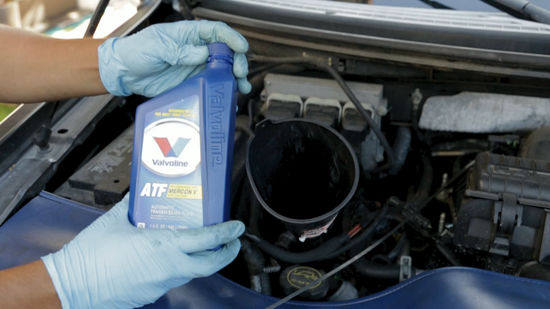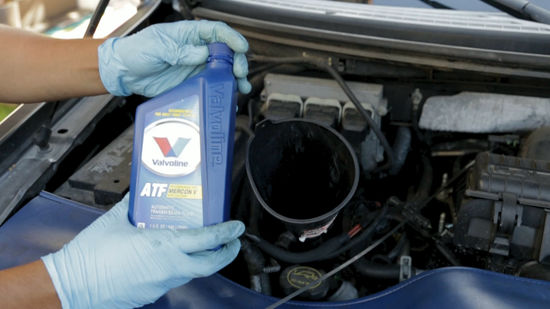Maintaining a car can be an intimidating task, especially when it comes to the fluids that keep it running smoothly. One of the most important fluids in a vehicle is the transmission fluid, which helps lubricate the gears and prevent wear and tear. However, many drivers are left wondering whether they can add transmission fluid while the car is off.
The answer to this question is not as straightforward as you might think. While it is possible to add transmission fluid when the car is off, it is recommended to do so while the engine is still running. In this article, we will explore the reasons behind this recommendation and provide you with some tips on how to safely add transmission fluid to your car. So, if you’re ready to learn more about the do’s and don’ts of adding transmission fluid, keep reading!
Yes, it’s possible to add transmission fluid while the car is off, but it’s not recommended. Transmission fluid should be added when the engine is running and warm, as this helps to distribute the fluid evenly throughout the transmission. Adding fluid while the car is off can result in overfilling the transmission, which can cause damage to the gears and other internal components. It’s always best to follow the manufacturer’s recommendations for adding transmission fluid.

Can You Add Transmission Fluid While the Car is Off?
Transmission fluid is an essential component of your vehicle’s transmission system. It lubricates the moving parts inside the transmission, helps to cool it down, and enhances its overall performance. However, if you’re low on transmission fluid, you may be wondering if it’s possible to add more while the car is off. In this article, we’ll explore this question in detail and provide you with all the information you need to know about adding transmission fluid to your car.
1. Can You Add Transmission Fluid While the Car is Off?
The short answer to this question is yes, you can add transmission fluid while the car is off. However, it’s important to keep in mind that there are some limitations to this approach. For example, if you’re adding transmission fluid to a manual transmission, you’ll need to have the car in neutral or the clutch engaged to ensure that the fluid is distributed evenly throughout the system.
2. When Should You Add Transmission Fluid?
You should only add transmission fluid when your vehicle’s transmission is low on fluid. Most vehicles have a dipstick that allows you to check the level of fluid in the transmission. If the level falls below the recommended level, you should add more fluid to prevent damage to your transmission.
3. How to Add Transmission Fluid While the Car is Off?
To add transmission fluid while the car is off, you’ll need to locate the transmission dipstick and remove it to check the fluid level. If the level is low, you can add more fluid using a funnel. It’s important to pour the fluid slowly to avoid overfilling the transmission. Once you’ve added the necessary amount of fluid, replace the dipstick and start the car to allow the fluid to circulate throughout the transmission.
4. Benefits of Adding Transmission Fluid
Adding transmission fluid can help to improve the overall performance of your vehicle’s transmission. It can also help to protect the moving parts inside the transmission from wear and tear, which can extend the life of your transmission.
5. Risks of Adding Transmission Fluid While the Car is Off
While you can add transmission fluid while the car is off, it’s important to keep in mind that there are some risks involved. For example, if you overfill the transmission, it can cause the fluid to foam, which can lead to damage to the transmission. Additionally, if you add the wrong type of fluid, it can also cause damage to your transmission.
6. Transmission Fluid vs. Engine Oil
Many people confuse transmission fluid with engine oil. While both serve a similar purpose in lubricating moving parts, they are not interchangeable. Using the wrong type of fluid can cause damage to your engine or transmission. It’s important to use the correct fluid for your specific vehicle.
7. Synthetic vs. Conventional Transmission Fluid
There are two main types of transmission fluid: synthetic and conventional. Synthetic fluids are typically more expensive, but they offer better performance and longer lifespan. Conventional fluids, on the other hand, are more affordable but may not provide the same level of protection as synthetic fluids.
8. Signs of Low Transmission Fluid
If you’re unsure whether your vehicle’s transmission fluid is low, there are several signs to look out for. These include slipping gears, difficulty shifting gears, and grinding noises coming from the transmission. If you notice any of these signs, you should check the transmission fluid level and add more if necessary.
9. How Often Should You Check Your Transmission Fluid?
It’s recommended that you check your vehicle’s transmission fluid level at least once a month. This can help you identify any potential issues early on and prevent damage to your transmission.
10. Conclusion
In conclusion, adding transmission fluid while the car is off is possible, but it’s important to do so carefully to avoid any potential risks. Always use the correct type of fluid for your vehicle and be sure to check the fluid level regularly to ensure that your transmission is properly lubricated and protected. By following these tips, you can help to extend the life of your transmission and keep your vehicle running smoothly for years to come.
Key Takeaways
- It is possible to add transmission fluid while the car is off, but it is not recommended.
- Transmission fluid should only be added when the car is running and at operating temperature.
- Adding transmission fluid while the car is off can result in an inaccurate reading and potentially overfilling the transmission.
- Overfilling the transmission can cause damage to the vehicle and may result in costly repairs.
- Always refer to the vehicle owner’s manual for specific instructions on adding transmission fluid.
When it comes to adding transmission fluid to your car, it’s important to follow the proper procedures to ensure the health and longevity of your vehicle. While it may be tempting to add transmission fluid while the car is off, it’s not advised. Doing so can result in an inaccurate reading and potentially overfilling the transmission, which can cause damage to the vehicle and lead to costly repairs. Always refer to your vehicle owner’s manual for specific instructions on adding transmission fluid, and make sure to only add transmission fluid when the car is running and at operating temperature.
How To Check Transmission Fluid Level & Add If Low -Jonny DIY
In summary, adding transmission fluid to your car while it is off is not recommended. It is crucial to follow the manufacturer’s instructions on how to add transmission fluid to your vehicle. Most car manufacturers recommend adding transmission fluid while the engine is running and at operating temperature. This is because the fluid needs to circulate through the transmission to ensure that it is added correctly.
Moreover, adding transmission fluid while the car is off can result in inaccurate fluid levels, which can damage the transmission. If there is too much or too little fluid, it can cause the transmission to overheat, leading to costly repairs. Therefore, it is essential to follow the manufacturer’s instructions and add transmission fluid while the engine is running and at operating temperature to keep your vehicle running smoothly.

